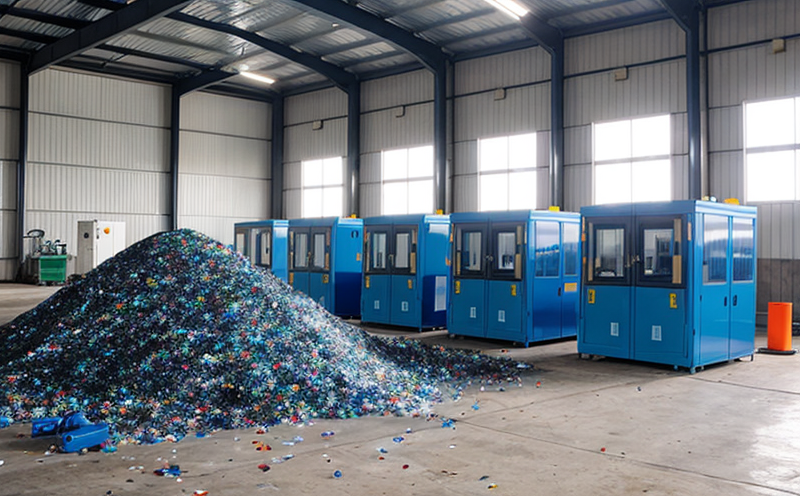EN 15345 Recycled Polypropylene (PP) Quality Requirements
The European standard EN 15345:2007 provides detailed requirements for the quality of recycled polypropylene (rPP) in order to ensure that recycled materials meet the same stringent specifications as virgin polypropylene. This standard is crucial for industries relying on rPP, such as packaging, automotive parts, and household goods.
The primary purpose of EN 15345 is to establish a framework for testing and verifying the quality attributes of rPP that are comparable to those of new PP materials. Compliance with this standard ensures that products made from recycled polypropylene are reliable, consistent, and safe for use in various applications.
The standard covers several key aspects, including mechanical properties, chemical composition, color, and other physical characteristics. Mechanical tests include tensile strength, impact resistance, and elongation at break, which are critical to the performance of rPP parts in end-use applications like automotive interiors or medical devices.
Chemical analysis focuses on identifying potential contaminants that could affect the durability and safety of the recycled material. This includes checking for heavy metals, residual monomers, and other impurities that might compromise the integrity of the product. The color specifications ensure that rPP retains its aesthetic appeal, which is important in consumer goods like toys or furniture.
Testing protocols are designed to mimic real-world conditions as closely as possible. This means subjecting samples to stressors such as high temperatures, chemical solvents, and UV radiation to assess the durability of recycled polypropylene over time. The standard also specifies acceptance criteria for each test parameter, ensuring that only materials meeting these stringent requirements can be considered compliant.
Given the growing emphasis on sustainability in manufacturing processes, compliance with EN 15345 is becoming increasingly important for companies aiming to reduce their carbon footprint by incorporating recycled plastics into their products. This standard helps manufacturers ensure they are sourcing and using rPP that meets the same high standards as virgin PP.
By adhering to these requirements, businesses can enhance consumer trust in their products while also contributing positively to environmental conservation efforts. The use of rPP not only reduces waste but also supports circular economy principles by extending the lifecycle of materials originally intended for single-use.
The testing procedures outlined in EN 15345 are rigorous and comprehensive, making them a cornerstone for quality assurance in the recycling industry. Compliance with this standard is essential for maintaining product integrity while meeting regulatory and customer expectations.
| Test Parameter | Description | Acceptance Criteria |
|---|---|---|
| Tensile Strength (MPa) | Measure the force needed to break a specimen. | ≥25 MPa |
| Impact Resistance | Evaluate resistance to impact loads. | ≥30 Joules |
| Color Variance | Determine the difference between sample color and standard. | ≤5 units on CIELAB scale |
| Residual Monomers (ppm) | Measure levels of residual monomer content. | ≤10 ppm |
| Heavy Metal Contaminants (ppm) | Detect heavy metal impurities. | ≤25 ppm |
The standard's detailed specifications ensure that recycled polypropylene remains a viable and high-quality alternative to virgin PP, supporting both environmental sustainability and product performance. Compliance with EN 15345 is thus not only beneficial for the environment but also enhances brand reputation by demonstrating commitment to responsible manufacturing practices.
Customer Impact and Satisfaction
- Enhanced Product Quality: Ensures that recycled polypropylene meets the same stringent standards as virgin PP, leading to consistent product performance.
- Increased Brand Reputation: Demonstrates a commitment to sustainability, which can enhance customer perception and loyalty.
- Cost Savings: Utilizing recycled materials reduces raw material costs while maintaining high-quality standards.
- Regulatory Compliance: Ensures that products meet the latest environmental regulations and industry standards.
Customers benefit from using rPP that complies with EN 15345 by receiving reliable, consistent materials that are safe for use in various applications. This standard helps to build trust between suppliers and buyers, ensuring that both parties can rely on the quality of recycled polypropylene.
Environmental and Sustainability Contributions
The adoption of EN 15345 plays a significant role in promoting environmental sustainability by encouraging the use of recycled plastics. By providing clear guidelines for testing rPP, this standard helps to ensure that recycled materials are not only used but also meet the same rigorous standards as virgin PP.
Compliance with this standard supports circular economy principles by extending the lifecycle of plastic products originally intended for single-use applications. This reduces waste and decreases reliance on petroleum-based raw materials, contributing positively to environmental conservation efforts.
The use of recycled polypropylene in manufacturing processes not only conserves natural resources but also helps to reduce greenhouse gas emissions associated with plastic production. By adhering to EN 15345, businesses can contribute to a more sustainable future while maintaining the quality and performance of their products.
Use Cases and Application Examples
- Packaging: Recycled polypropylene is widely used in packaging materials due to its durability and cost-effectiveness. Compliance with EN 15345 ensures that these materials meet the necessary quality standards.
- Automotive Industry: The automotive sector benefits from recycled PP for components like bumpers, interior trim, and structural parts. This standard helps ensure the integrity of such parts.
- Household appliances often use rPP for handles, gears, and other components where durability is critical. Compliance with EN 15345 guarantees that these parts will perform reliably over time.
| Use Case | Application Example | Benefits |
|---|---|---|
| Packaging | Bottles, containers for beverages and food items | Sustainable packaging that is both cost-effective and durable. |
| Automotive Industry | Molded parts like bumpers and interior trims | High-performance components with reduced environmental impact. |
| Gears, handles for washing machines or dishwashers | Durable and reliable parts that meet stringent quality requirements. |
The versatility of recycled polypropylene makes it an attractive material choice across various industries. By adhering to the strict standards set by EN 15345, businesses can ensure that their use of rPP is both environmentally responsible and economically viable.





